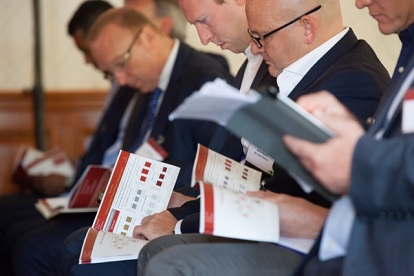Expert: David Lane, Partner, and Business Development Technical Director, LGT Wealth LLP. Facilitator: Roderic Rennison, Rennison Consulting Ltd www.rennisonconsulting.com
Headlines:
- Almost all firms have a CIP, but far fewer have a CRP
- There are challenges in managing some client relationships in connection with drawdown where the client draws down more than is recommended or bypasses the adviser
- Those that do, are likely to have better client outcomes
- A well-articulated CRP alongside a CIP is likely to reinforce the attractiveness of the firm in the event of a sale
Context:
Nearly every firm now have a Centralised Investment Proposition, but during a recent series of roadshows, LGT discovered that the same was not the case with Centralised Retirement Propositions (CRPs,) and that practice varies widely amongst intermediaries.
This is against the backdrop of the FCA’s 'Dear CEO' letter sent in 2020 relating to the suitability of retirement income advice, which was later halted, and now the forthcoming new Consumer Duty regulations.
There is also consideration to be given to PROD and product governance.
Recent research appears to indicate that 56% of larger firms see regulatory scrutiny as likely in the next few years.
Points Discussed
- What is the right amount to hold in cash?
- How should clients who drawdown far more than recommended, or who deal directly with pension providers without taking advice, be managed? Should advisers disengage with them?
- The fundamental shift of risk from the employer to employee because of the demise of most DB schemes and the move to DC schemes instead
- The pensions freedom legislation has exacerbated this risk for employees
- Levels of achievable income from underlying investments have changed; 4% is no longer automatically achievable
- The underlying assumed 8% pa growth in markets cannot continue
- Lifestyles have been re-evaluated following COVID
- Open and honest conversations need to take place with some clients regarding the sustainability of their income
- Annuities are still relevant despite what some people’s perceptions are
- NEST could become a major area of failure if there is no one to advise people with pension pots of say, £20,000
- The cost of advice; is it too much, does it act as a deterrent, and how this issue can be addressed?
- For pots of less than say £250,000, is there general answer? Could it be robo’ advice?
- The consensus was that it is more to do with people’s reluctance to reveal too much information about themselves
- Having discussions at the right time is key; each client is an individual and needs to be treated as such
- Where CRP site within a firm’s proposition; there was general agreement that it is part of the overall CIP
- The use of guaranteed income products; the take-up has been relatively low so far, why is this?
- The role of technology within CRPs; what is the best use in relation to cash flow modelling for example? It was noted that these tools are widely used as it is vital for clients to understand how long their pot will last in different scenarios
- A well-articulated CRP alongside a CIP is likely to be a “plus factor” in the event of a sale
- What does the existence of a CRP deliver from an adviser's perspective? One benefit is that it provides a set of guidelines to follow and points to consider when talking to clients
- Does the level of a client’s income make a difference? Is one necessary for wealthy clients whose income is very unlikely to be an issue for them?
- FCA visits; does the lack of visits create an issue as few intermediaries now speak to the FCA routinely?
- Is health an issue that needs to be better addressed to ensure that poor health and reduced life expectancy are fully factored into the advice provided? One suggestion was the use of external health screening services in relation to annuity purchase to obtain the best available rates
Key takeaways:
- A CRP is a framework, not an investment solution
- Effective client segmentation is key
- The overriding need is for effective financial planning
- Cash flow modelling is likely to be an integrated part of the solution
- The investment element delivered by fund managers is what drives the CRP


